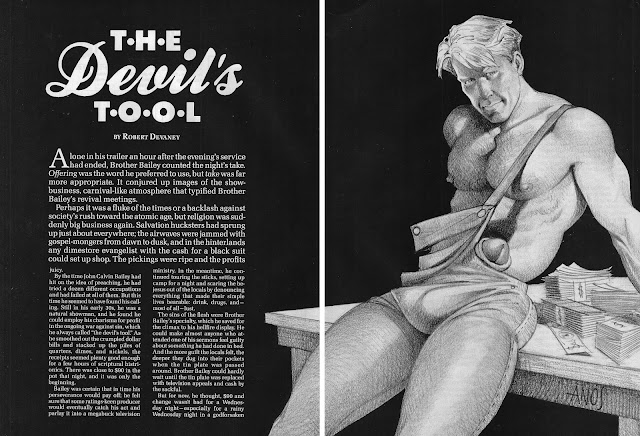A darkly comedic work, Robert Rodi’s novel Fag Hag (1993) explores the unique friendships between gay men and straight women and the precarious romantic attractions that can occur. For Natalie Stathis, this adoration toward her gay best friend, Peter Leland, is taken to the extreme and the character repeatedly sabotages Peter’s dating life to preserve their relationship, with the novel culminating into Natalie kidnapping Peter, locking him in her basement, and attempting to win his love. In the May 1986 issue of Blueboy (which has been broken into two parts), the article by Susan Ross and her gay friend provides advice for how to avoid the incidents depicted in Rodi’s fictional tale. As the authors stress, it is important for both parties to establish concrete boundaries that respect each other’s lifestyles. Interestingly, Ross’ article pairs well with Sheila Kohn’s work in the February 1978 issue of Blueboy, where Kohn explains how her amorous feelings toward her gay friend prompted the death of their friendship. Included in the second half of this issue (see the first half here) is an article on the Summit Lodge in Rockbridge, Ohio, and photo spreads of Chris from Surge Studio and several of Roy Dean’s models.























































